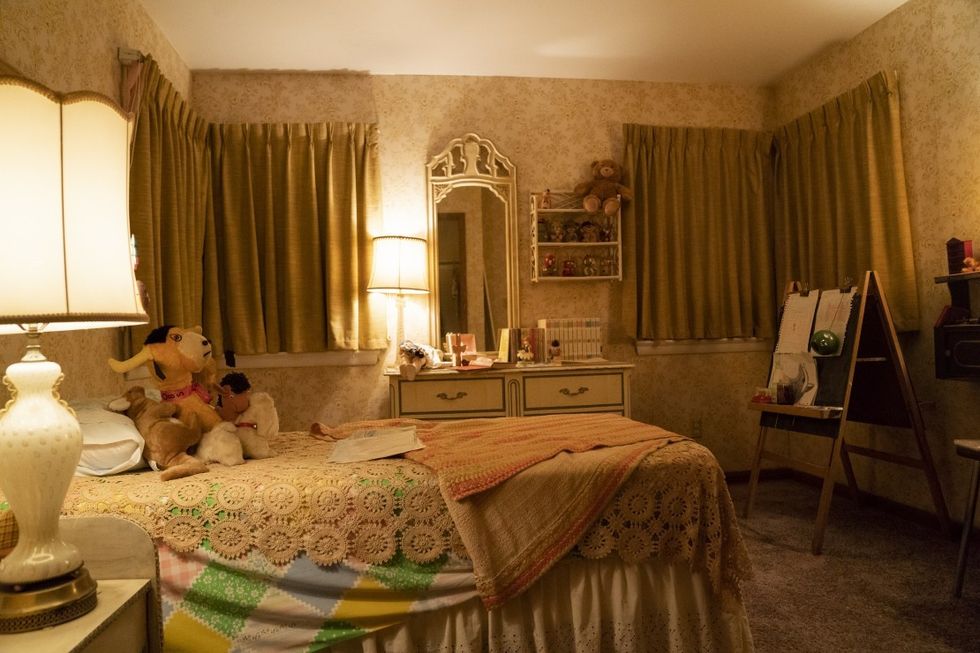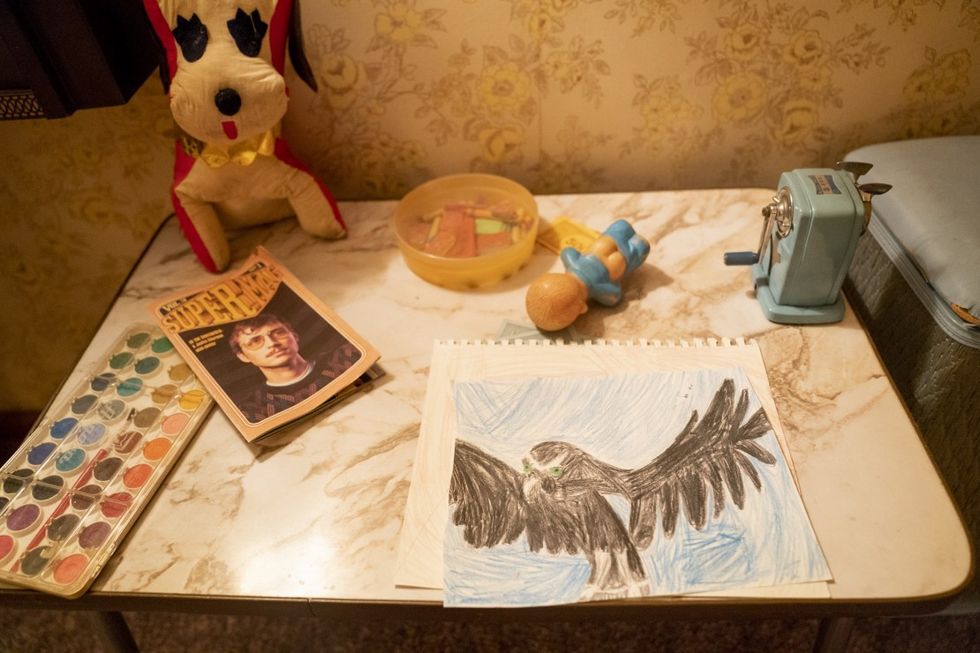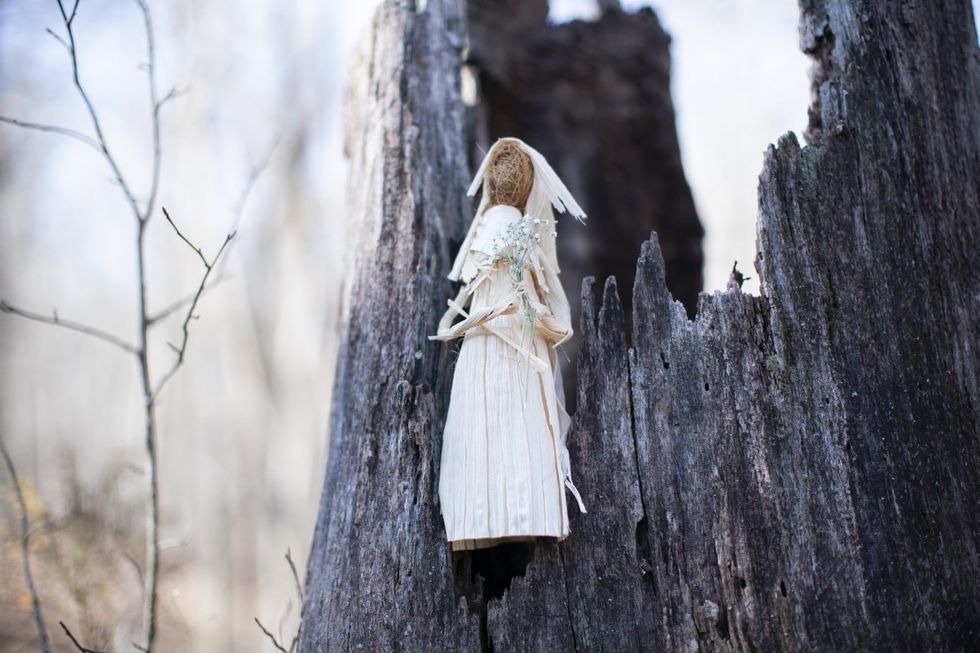'True Detective' Production Designer Ryan Warren Smith on the Power of Nostalgia
For Ryan Warren Smith, the production design of "True Detective" was very personal.

When you're telling a story, what element is essential to keep an audience attached? The answer(s) to that question could vary, depending on the audience, the genre, the purpose. But in the case of True Detective, the answer lies in the backstory—what's behind the scrim, and then what's behind what's behind the scrim. How bad will it get is often the crucial question, and once you've watched a couple of episodes, you very much want an answer to that question.
The latest season of the show delved into how bad it could get, in grand, atmospheric manner. Creepy dolls. Lost children. Disturbed neighbors. Dangerous junk. Mis-told backstories. The two detectives, played here by Mahershala Ali and Stephen Dorff, wade through a murk of family dysfunction, economic decline, local violence, and dark, uncontrollable psychic urges to solve the mystery—and as with the other installments of True Detective, we see the repercussions of the story across decades and generations as we move forward. The key to the show's appeal is, in some senses, its mood, and the mood owes a great deal to high production values.
No Film School talked to the series production designer, Ryan Warren Smith, about how the houses and interiors for the show were developed, and what that had to do with the unsettling effect these episodes finally have on the viewer.
No Film School: You said not long ago that this particular installment of the True Detective series has a lot more heart than the other sections. Could you say a little bit more about that?
Ryan Warren Smith: When I read these scripts, there was so much more focus on family. Myself, I have two young kids, a one-year-old and a four-year-old. So as a father reading it, it really affected me because it was so much more about the family aspect of it, the growing of the family and growing apart, and being a father and also losing a child, all that kind of stuff. I didn't know Nic at the time but I could tell through his writing that he too was a father and that he was writing the script from that point of view.

NFS: How did that shape the way you worked?
Smith: I felt there was warmth that needed to be added, especially in the Purcell house, where there was so much division between that family, and then loss on top of that. And so, when I thought of colors, and tones, I started considering where we needed warmth and where we didn't, and that was one of the places we did.
I didn't know Nic at the time but I could tell through his writing that he too was a father and that he was writing the script from that point of view.
NFS: When you were setting up the children's rooms in the house, where did you get all those items that went in the rooms themselves? How did you find them? Once you found them, how did you choose them? The one curious thing about this story is that you don't know the whole story at first, and things are gradually sort of revealed.
Smith: Yeah, definitely. There's one line that comes later in the script when they find the toys in the forest. Tom says, “I'm the one who bought them toys.” So I knew that he did give them things, and they did have somewhat of a normal childhood within their rooms. So, the set decorator was amazing, a guy named Markus Wittmann. He would travel, even on the weekends, and we just scoured the state. And then we also scoured the four or five states nearby and essentially accumulated our own prop house. And then I also worked with the prop master as well, who worked with a lot of those key elements for the children. So we all worked as a team to kind of gather those things and put those in their rooms. You see their character only through their rooms, throughout.

NFS: When you were choosing from all these different things that have been assembled, what were your criteria? What were you looking for in props and even the smallest things?
Smith: When I was going through things, it was all about tapping into my own nostalgia, and seeing what made me feel that feeling of being a child, and what reminded me of being a child. With Julie Purcell's room, I really wanted to use vintage wallpaper. That was another thing that we really wanted to find. We had to duplicate it on stage as well, so we had to find enough for the real house and find enough for the build. We found some out of Europe, some old vintage wallpaper that somebody had collected and that we got shipped in, and we used it. And I felt like that gave a great texture and warmth to her room.
NFS: When you were designing these sets and constructing these environments for the characters, to what extent did you work with the actors on that? In terms of their blocking and their physical presence?
Smith: Yeah, Mahershala and I met early and had numerous sit-downs, hours at a time, where we talked about character and what he felt would be around him. He was really hands-on. I reach out to all the actors about that. And that's important to me because I really want to find out what these people have around them. People create these piles or layers of interests that they used to have, and those things should be in the room as well. As humans, we also have interests that don't last, so a lot of those things are important to me, too. So those layers are what I have conversations with actors about. Not only what they are into now, but what they used to be into and what kind of stuff we can have around them to create that character and make it feel real.
It was all about tapping into my own nostalgia, and seeing what made me feel that feeling of being a child, and what reminded me of being a child.
NFS: Were there small props that were created specifically for the show itself? Or was it mostly authentic gathered material?
Smith: There was a lot of authentic material, and then the stuff like Amelia's book and the cornhusk dolls, those were things we created. But we often just tried to find real, authentic things that bring back nostalgia to the viewers.
NFS: What was the evolution and thought in making the cornhusk dolls?
Smith: That was an early conversation with Nick because we just didn't want to have them look too much like the stick figures in season one. We just started doing research in the area, and we found this was something people were getting at craft fairs. Once we tapped into that, we were like, “Okay that's it, that's what we need to do.”

NFS: When you're dealing with different time periods, how did you keep them straight? What is your method of organization, in your mind?
Smith: I kind of see all things in colors, or feel things through colors. I felt like it was faded in the '80s; everything was more about faded colors and tones. Anything we put out there we had washed down really a lot. And then as it got to 1990, we'd add a little bit more brightness. And then when you get to 2015, we allowed more colors, more reds and maroons. Because I didn't ever want it to be overly obvious which timeline they were in. I wanted there to be some confusion, which lends itself to the story and speaks to Mahershala's mind and the way he was remembering things as well. And so I did that all through colors, if that makes sense.
NFS: In terms of the more daily, nitty-gritty organizational things, how did you organize, so that you'd be able to find what you were looking for?
Smith: We essentially had binders and also research photos. We found a photographer from Fayetteville who took photos from the '70s all the way up to the present, and we kind of used him as a Bible. If we weren't sure about something architecturally, we would dive into his photos and see what existed and what didn't. And when we were organizing stuff, we would do the same. And then we always went back to his photographs.
NFS: And did you use models at all? Did you construct models?
Smith: We did a lot of 3D renderings of the hero sets. And then we did do an actual model of the Woodard house for the shoot-out, for actors’ blocking and for the stunts and the stuntman.
I kind of see all things in colors, or feel things through colors.
NFS: I'm curious about the challenges that were unique to this series, as opposed to other series you've worked on—things that came up in this particular project that were not necessarily issues in other projects.
Smith: This was my first TV show. So, up to this point, the longest shoot I had done was a 40-day shoot for a film called Hold the Dark. The fact that this one was 120 days was something that was initially hard for me to wrap my head around, but once I got into it, the transition into doing something so long form was fine. The three timelines was something that was very new to me as well. But once I got into it and did the research and the prep, it became easy.
But being away from my family for so long was the most challenging thing for me. All those things taught me a tremendous amount. After the project ended and I went home, I had a new confidence. It was like, "Okay, now I feel like I can do anything." The very period-specific things were very new to me as well. And also working with such a large crew and such a large budget. All those things were new challenges. I had to just dive into them the best I could and hope that they went well, and I'm so glad they did, of course.











